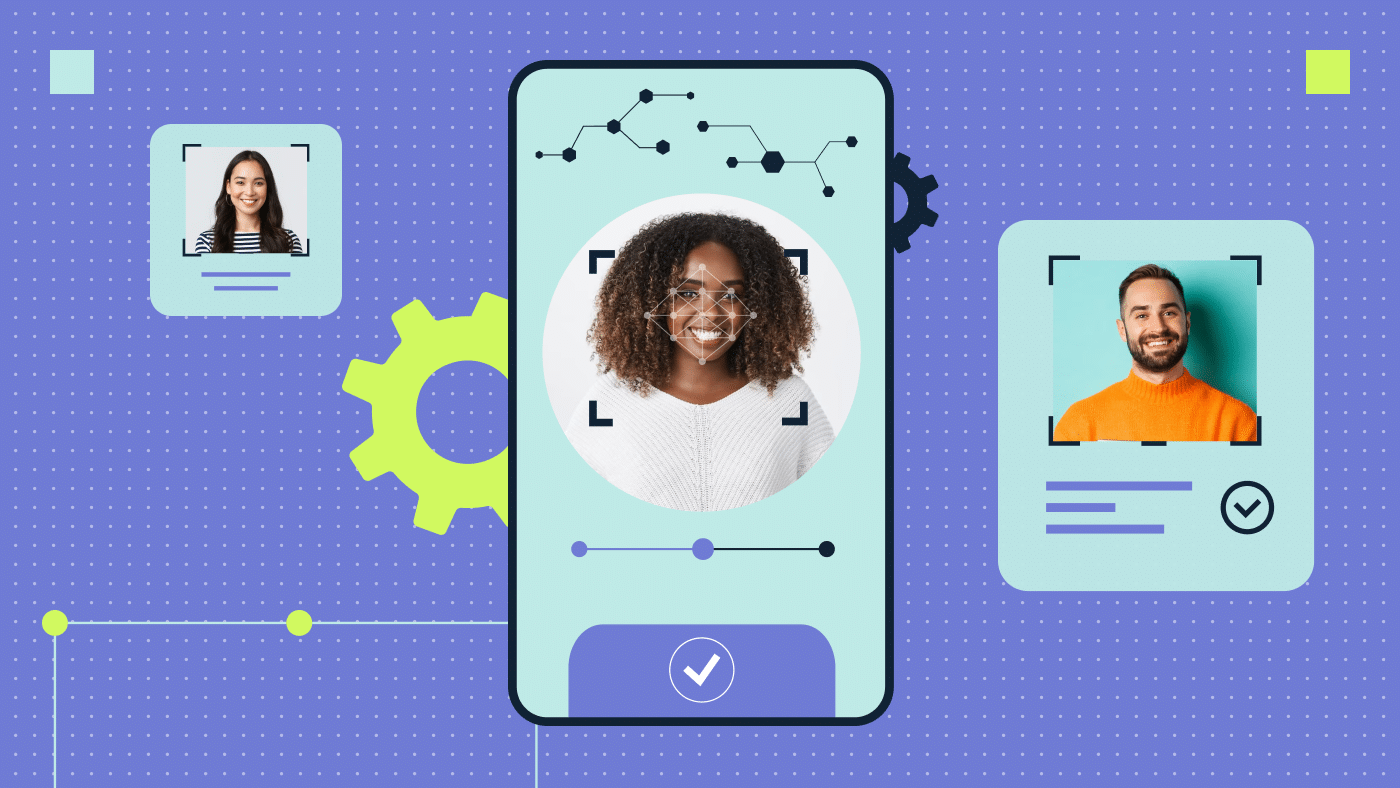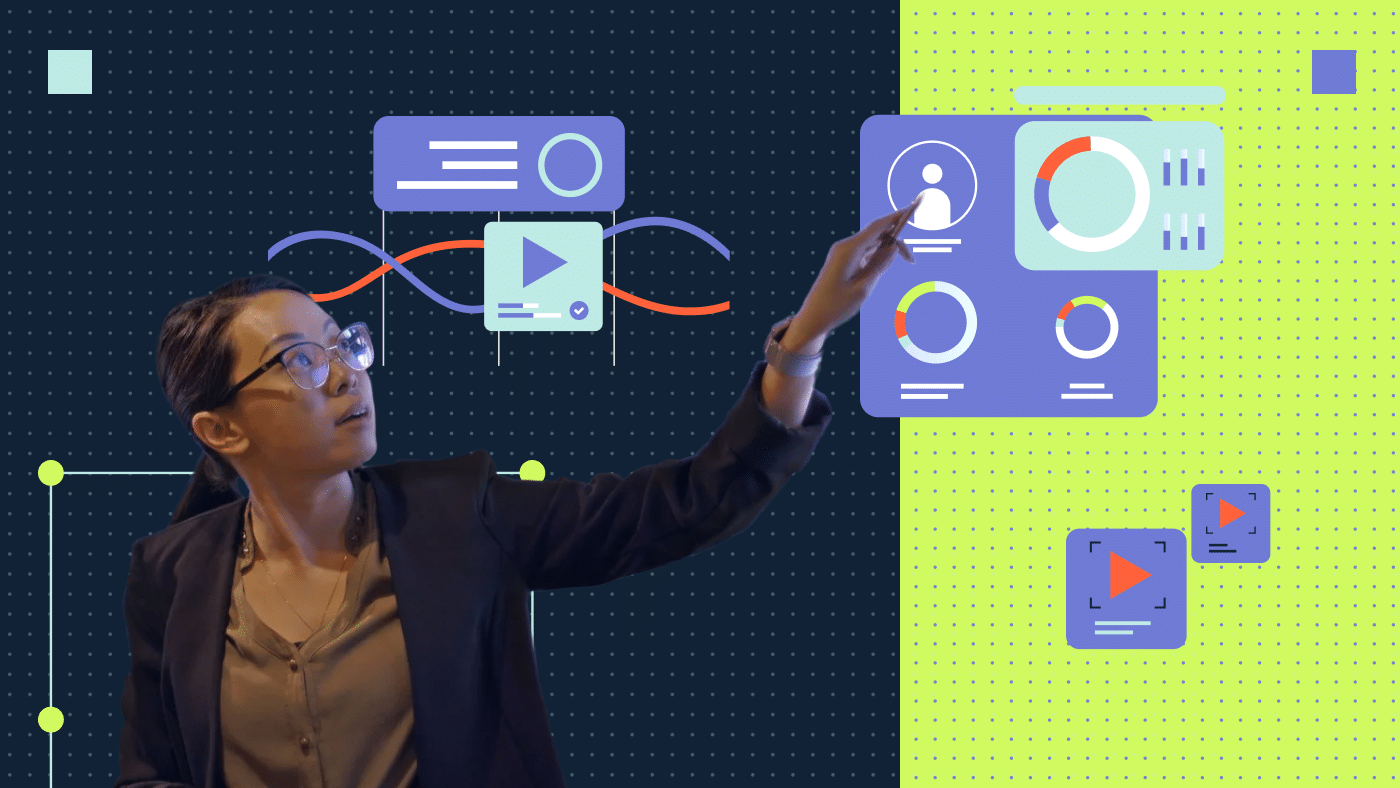Marketing and sales teams who actively utilize personas in their segmentation, prospecting and selling process are twice as likely to meet their revenue and lead generation goals.
People buy based on emotion. They then logically rationalize their impulse. So, wouldn’t you want to know how to satisfy your ideal customer’s problems, creating an urge to buy?
This is easier done for B2C shoppers. However, we — B2B marketing and sales pros — have similar albeit longer-cycle tactics to influence the same impulse-rational behavior.
- Sales executives don’t buy Porsches and Patek Philippes for necessity. They buy them to feel and be perceived as important.
- Students don’t buy the newest $1,000 dollar phone because they can afford and need it. They buy it to feel in trend with their social circle.
- And Chief Financial Officers don’t buy month-end automation software because they really have to. It’s because it helps them reach KPIs faster, paving the way for accolades, promotions or a raise. Their decision also allows them to go home by 5 pm to spend more time with the family, thereby reducing stress.
So, how do you get prospects to pay attention to your offer in a crowded market? The answer lies in actually understanding your customers and not treating them as a cluster of job positions, verticals and geographies. Let’s roll:
Summary | In case you’re crunched for time
- A buyer persona describes your ideal customer by outlining their motivations, fears, information sources, and demographic and geographic factors. Teams who actively use personas increase their ROI and engagement due to personalization.
- Segmentation helps the marketing and sales team convey relevant messaging by targeting the right people at the right time in their buyer journey, to sway them towards a purchase decision. Teams who segment correctly enjoy high email open and click rates, landing page conversions and post-demo close rates.
- A buyer journey describes the purchasing steps your ideal customer takes in order to become aware of, consider and purchase your service or product. To increase user engagement and sales, ensure your journeys are unique to personas.
- To build personas, conduct interviews, run surveys and analyze CRM data of existing customers, channel partners and the sales team. Using free download templates you find online runs the risk of being the same as your competitors and gives zero advantage.
- Top ways to use personalization today. A collection of findings and ideas from our experience and numerous studies prove that personalization is key to lead generation.
- Learn more, sell better — insider tips to effective B2B marketing and sales.
What is a B2B buyer persona?
1. A description of your ideal buyer
The buyer persona is an aggregate description of your ideal buyer, matched to a specific service or product. Personas describe the motivations, attitude dispositions, demographic information, key trusted information sources along with other buying behavior characteristics of your ideal customers.
“Companies who exceeded lead and revenue goals were 2.4X as likely to use personas for demand generation than those who missed lead and revenue goals.”
A detailed persona allows you to tailor your marketing content and sales approach to meet a customer’s perceived needs and solve their problems at every stage of their buying journey.
Here’s a basic list of questions that a correct persona card should answer. Naturally, you should be thinking of how your service or product makes the persona’s life easier with every question:
- What is the role of the persona in the purchasing process?
- What primary and secondary information sources does the persona trust?
- How does the persona get measured in their job performance?
- How does the persona prefer to communicate?
- What does a day in the life of the persona look like?
- What keyphrases does the persona utilize in searching for your services?
- What are the top frustrations of the persona?
- Which geographies and industries hire this persona most frequently?
- How many direct reports does the persona have?
- What internal barriers would the persona face in moving along the buying stages?
- What personality traits do they lean more toward (detail-oriented, skeptical, logical, do-it-all, team player etc)?
2. A description of the wrong buyer
Negative personas are those people who you don’t want to sell to or target. Having negative personas helps decrease team frustration and wasted effort on:
- Prospecting the wrong people who cannot afford your solution
- Emailing people who don’t care about your offer
- Building content that attracts the wrong people
- Running costly paid advertising campaigns, which speak to the wrong audience
- Finger pointing between the sales and marketing teams on lead quality and close rates
If you’re just starting your audience segmentation efforts, this might be a little advanced. First, create your buyer personas, and then identify the negatives. As part of your gathering process (yes, we talk about that below), you’ll have enough info to build out the negatives.
3. How most B2B businesses get it wrong
We typically see wrong targeting and segmentation practices in emerging and early middle-market companies. That’s because you have organically grown the business, but you have not been focusing on marketing efforts to help with exponential growth.
Misunderstanding your buyers leads to non-resonating messaging and segmentation applications, resulting in money going down the drain.
Here are some email and LinkedIn subject line examples of what we often encounter:
- Marketing to companies, not people:
- Software companies love us!
- See how we are better than other data encryption businesses
- Marketing to roles and clusters of people, not people:
- CFOs like you give our financial close software 5/5!
- CMOs rave about our social listening software. Book a demo
- Marketing generic events:
- Get excited! The holiday season is around the corner
- Attendees loved our summit. See the keynote videos on our channel
- Marketing yourself and not paying attention to the reader’s needs:
- We’re your one-stop shop for support services
- We fund more portfolio companies than other VCs
To get your messaging right, you need to know who you’re marketing to and match the right message to them through segmentation.
Segmentation helps with relevancy and improves conversion rates
Segmentation sounds like a scary word. But in simple terms, it’s how you divvy up a group of people based on certain shared factors (like where they live, roles, attitudes, problems, information sources etc). This way you can tailor your message and efforts better to your now specific audience.
“Recipients are 75% more likely to engage with emails from a segmented campaign than generic ones.”
~ MailChimp
What factors should you be looking for when building effective buyer personas? The answer lies in analyzing the various unique descriptive data points you need to gather to understand your audience better. Let’s cover the top ones to get you started.
1. Psychographic segmentation

Psychographics is the practice of describing human traits based on psychological attributes. Psychographics are useful for market segmentation for relevant message delivery based on understanding traits such as:
- Activity, interests, opinions (AIOs)
- Attitudes
- Values
- Motivators
- Lifestyles and events
In order to understand your ideal customers, it’s critical to run through specific exercises such as surveys, interviews, web behavior analysis and focus groups to help define meaningful persona cards — useful for both the marketing AND sales team.
For example, think of a CFO working for a company of under 100 people somewhere out on the warm coast versus a CFO of a 1,000-person company working in the heart of Manhattan.
Although the role along with some responsibilities may be shared, their decision-making group, hobbies, political dispositions, rigor of personality, and technology stack will be vastly different.
To be successful in nurturing and selling to these personas, you must know these differentiators to build resonating material and tailor sales communication.
Yes, in the latter sections I’ll teach you how to get this information, easily organize it on a cheat sheet/persona card and the right questions to ask.
2. Demographic segmentation

Demographics is the statistical study of human populations, focusing on analyzing their structure, distribution and size. Demographic attributes are super helpful in quick and dirty filtering of people to ensure you keep CRM lists clean from obvious mistakes.
For example, you have data supporting that a CFO of a large firm is between 40 and 56 years of age, is male, holds a bachelor’s degree and has a salary above $150k/year. This way, you can filter out people who do not meet these criteria or identify lists with a lack of critical info.
Basic demographic attributes:
- Job title
- Age
- Gender
- Ethnicity
- Level of education
- Salary
- Family size
- Religion
So, knowing psychographics and demographics, you are able to tailor your message towards the motivations of a person and target a specific group of people most likely to represent your ideal audience profile.
3. Geographic segmentation

Geographic segmentation targets your audience based on a geographic border. People’s Interests, opinions, values, and hobbies are different based on where they physically live from city to country.
The most applicable use for marketers is, of course, for targeting zones in their paid advertising, exploiting nuances in language and holidays.
For sales teams, well, knowing the sports teams, political atmosphere and things to do (like surfing vs skiing) will get you very, very far with an engaged prospect, long-time client, or channel partner.
Basic geographic attributes:
- Country
- State/Region
- Climate
Why you care: Different countries, states, and cities will have different holidays, weather, and political atmosphere, which all influence a person’s lifestyle.
4. Behavioral segmentation

Behavioral segmentation analyzes how customers go through their buying process. A practical way to analyze your audience behavior is to see how they interact with your competition overtly (social follows, comments) and organically (phrases, keywords, traffic to top pages).
Basic behavior attributes include:
- Engagement rate
- Repurchases
- Dropped purchases
- Social mentions
- Special occasions
- Behavior flows
Why you care: understanding basic behavior cues allows your digital team to build dynamic user experience journeys, guiding specific audiences through the path that is most likely to convert.
How to build a buyer persona
You finally made it to the how-to section, so don’t worry: I won’t make you download a useless persona template to shove you in the sales funnel half-heartedly. Instead, I’ll give you the thought starter you need to get rolling. If you need help, just give me a shout.
1. Talk to your sales team
Your best source of information is the team on the ground and in the action, your sales folks. Yes, they’ll be biased and make sure you filter out their pain points vs the prospects and customers. Some questions to ask:
- What questions do you find potential customers frequently asking?
- Who do you find frequently talking to?
- Who typically keeps blocking/slowing down the sale?
- How do you know who to sell/reach out to?
- What are the top three message types you send to prospects?
- Is there something you wish you had that would convey a value add?
- Looking back at the opportunities you’ve lost, is there a common factor/trend?
- Looking back on opportunities you’ve won, what common factor contributed?
2. Interview your customers
The best way to understand how and why someone purchased from you is to interview existing customers. Some questions to ask;
- When did you realize you need a solution like ours?
- Before reaching out to us, where did you do your research?
- How did you hear about us?
- What made you stop research/comparisons and continue learning, negotiating and purchasing with us?
- Who was involved in the purchase process (look for enablers and delayers)?
- What were the deal breakers?
3. Analyze your competition
Paying attention and learning from your competition is the best way to avoid burning your budget on mistakes they’ve already made. Utilize common paid versions of tools like Sales Navigator, Moz and HubSpot Sales to uncover behavior trends.
We typically help customers with deep SEO influence research and tactics:
- Keyphrase research: ask your lead generation team as to the topic clusters and specific keyphrases your audience consistently searches for online and how they find your competition. Utilize these phrases in all of your sales material to help sway decision-making.
- Top landing pages and blogs: understand how and why your competition is investing ad budget and organic search resources to drive traffic to certain pages. If there’s value to that, build a redirect and suppression plan to get the first pick at quality leads.
- Top message themes: looking over LinkedIn and Twitter, you’ll know the general message atmosphere of what your competitors and channel partners are pushing. This means you can do something shockingly different to actually get attention or focus on targeting the audience that is publicly engaging them on posts. Oh, and by looking at who is engaging with your competition on posts, you’ll further be able to refine your personas.
4. Run surveys and polls
Survey Monkey is awesome for running surveys and polls to your existing known market (inexpensive to do) and to the mysterious black box (unless you have personas) we call our potential prospects.
Now, useful B2B surveys and polls of an unknown market can get pricey to run (at least $25k), but the return on investment is astronomical. If you do it right, you set your business up for serious growth and quickly become a reference in the industry.
The results from prospects and polls can be used for content, sales material, and gated research pieces, which then quickly become your primary lead generators.
5. Utilize social listening
Good tools like Hootsuite, BuzzSumo, SocialBakers & Hubspot Marketing Hub are set up to actively “listen” to your brand and preferred topic cluster mentions.
To put this in human terms, you input the keywords, topic phrases, hashtags and brand handles that you want to track on social channels to discover common questions, complaints, and accolades people are chatting about.
How your persona card should look like…ish

The purpose of a persona card is to have a holistic view of your audience in a conveniently referenceable place. It should actively be used when planning campaigns, social messages, pitches, and channel partner presentations.
Yes, you should have multiple persona cards, as many as you need in order to satisfy your ideal audience representation. And yes, you need to update your cards at least once a year.
Activity and keywords
- What keyphrases would catch and hold their attention?
- Are they more formal or relaxed in communication style?
Attitudes and personality
- Are they a fact checker, a team player, a builder, a skeptic etc?
- Are they an optimist, a realist or a pessimist?
Lifestyle and timing
- How does a day in the life of this person look like?
- What tools do they rely on daily?
- How does their tech stack look?
Buying process
- Will you need legal approval?
- Who is the mandatory signatory/approval?
Values, motivations and fears
- Dealbreakers, features they can live without
- Critical questions
- Objections during the sales process
- What purchase do they regret the most, and why?
Opinions and influences
- What are their career goals and how can you help achieve them?
- Who do they want to impress?
- What’s their relationship with other members of the buying group?
Challenges and pain points
- Productivity: are they concerned with mundane work and wasted time?
- Process: are their internal processes burdensome slowing down the team?
- Financial: could they be saving more money and getting better quality?
- Support: are they overwhelmed and need an extra hand with ad-hoc support?
Interests and information
- What companies do they view as reliable sources of information?
- What social channels are they more likely to use?
- What news do they read and listen to?
- Do they have favorite blogs and podcasts?
- In their spare time, what hobbies do they typically invest their time in?
Basically, speak your audience’s language in order to get emotionally close to them.
Utilizing various segmentation tactics allows you to understand and hyper-segment your audience to deliver a more personalized experience.
| Psychographics | Demographics |
|---|---|
|
|
| Tip: we’ll cover this below. But qualitative research and interviews are the best way to get this info. | Tip: useful for message fine-tuning, filtering lists for quality data. |
| Behavior targeting | Geographic targeting |
|---|---|
|
|
| Tip: Combine behavior actions to build out lead scoring, round robin and stellar user experience anticipating typical user behavior. | Tip: Your services are more needed in some places of the world than others. Geographic targeting lets you focus budget and effort on the higher converting areas for your service or product lines. |
Practical ways to use personas today
“The essential difference between emotion and reason is that emotion leads to action while reason leads to conclusions.”
~ Donald Calne
You get the point: your team needs to start selling relevant services and products to the right people and not broadcast messaging to generic clusters of job roles and company types.
Here are some practical ways to use personas to improve personality marketing:
1. Map the buyer journey by persona to deliver the right content at the right time
Buyer journeys are the series of actions that customers take in order to purchase a product or service. In the simple form, the journey can be broken down into three stages:
- Awareness stage
- Consideration stage
- Decision stage.
You must have enough educational and persuasive content in order to speak with the right audience, at the right moment, using the right channel while serving useful material to nudge them to the next step in the journey.
2. Build an FAQ page
Frequently asked questions pages help on many fronts.
First and foremost, they help you identify the questions your various personas keep asking and force you to build a wiki to address their needs and insecurities.
Second, they enable your sales team to train fast and be ready to handle common rejections while educating the customer.
Third, when done right, FAQ pages can work wonders for SEO, audience engagement and content strategy.
3. Segment your emails by persona
In case you still need to do some work on building out your personas (chances are you do if you’re still reading this post), you can still start segmenting your audience and tailoring your messaging to them. As per HubSpot, message personalization is the #1 tactic used by email marketers to increase engagement rates.
So think of the top characteristics and types of people you’ve had success selling to, and try breaking out the lists in your CRM. Next, create messages and offers that you think would resonate best with them.
Have a look at the above segmentation section and see if you can complete those attributes the best you can (in your CRM).
Email theory and application is a detailed topic, which we’ll continue covering in our posts, so stay tuned.
4. Update your landing pages
If you’ve got at least some email segmentation setup, the next thing to do is to ensure your emails are consistent with your landing pages and vice-versa.
“Strategic landing pages are used by 68% of B2B businesses to acquire leads.”
~ Marketo, 2018
Your landing pages must have:
- A clear offer
- A clear CTA that drives action. And no, “Download Now” isn’t it
- A contact form with progressive/smart fields
- Be clean and simple
- Be tied to a campaign
🍪 points if you’re able to build a variation landing page with content blocks reactive to the types of customers viewing your offer.
5. Lead score to get high-quality prospects and leads
Now that you know a tad about behavior segmentation, why not try assigning some lead score points to various actions of your contacts?
Here’s a thought starter:
- High funnel content downloads
- Low funnel content downloads
- Direct contact forms
- Chatbot engagement
- Newsletter multiple-opens
- Social media engagement
6. Update your content strategy
And now we come to the more difficult part. Perhaps I lied about the updating tomorrow thing, but hey, you can at least pick a few pieces to help drive the message home for the targeted few (hint: focus on case studies first for an easy win).
Every piece of content in your content strategy must be tied to a persona, journey stage, deal stage and scenario for sales to use it in.
Keep in mind that having a solid content strategy tailored to personas also helps you reduce bounce rate, increase engagement and decrease budget burn on paid advertising as you’re driving people to relevant, resonating learning material.
“Because companies that blog typically have 97% more inbound links than those that don’t, which means more search engine traffic.”
7. Update your site’s layout and experience to serve the audience
Great user experience paired with stellar SEO drives engagement and conversion. Your personas should be able to navigate their intent path with ease.
Consider these stats to help create a quick improvement map:
- Smart CTAs that serve the interest of a user perform more than 200% better than basic CTAs (HubSpot).
- If your page load time is up to 5 seconds, you risk losing up to 20% of traffic (Section.io).
- White space around paragraphs and margins increases comprehension by 20% (Crazy Egg).
- Up to 32% of people who attempt a mobile transaction with a poor experience, do not return.
- And the list goes on…
8. Watch your analytics to understand target customers
Simply using what you’ve got instead of reinventing the wheel will get you far. Pay attention to the following sources of traffic and leads:
- Bounce rate (email, landing pages, core pages, case studies)
- Click-through rates (same as above)
- Top landing pages
- Referral traffic sources
- Drop-offs
- Time on page
- Top form fills
- Top CTAs
- Conversion % by lead stage
Learn more, sell better
I can’t believe you stayed for the full read, and that’s impressive. Now that you’ve affirmed that personality-based marketing works, solidify the strategies and tactics to help you attract and sell more.






